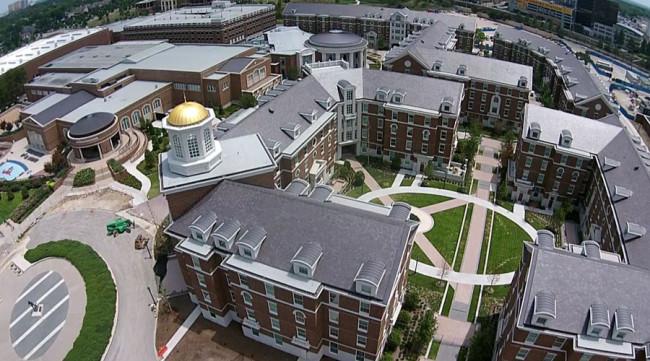
Anyone who has stepped foot on SMU’s campus within the past several months has noticed a big change, or five. The new residence halls are finally completed and RAs have already settled in, soon to welcome their first residents.
While the new building may be the most obvious change in residential life, it’s perhaps not the most transformative. What some students don’t know is that the term “residential commons” refers to a new system being implemented across campus in every residence hall, not just the five newest ones.
This system will introduce a number of changes to the residential experience. One big shift is the implementation of Faculty in Residence (FiRs). These are professors and deans who will live in each residence hall among students to serve as mentors and be accessible to residents at all times. These faculty members were selected based on their desire to connect with students outside of the classroom, students’ opinions of them and recommendations from their deans and department chairs.
“Dr. Kirk takes students to Hilltop on the Hill. She also does SMU-in-London. Dr. Thomas goes on alternative spring breaks. Wheaton mentors students really intensely about their passion for economics, and that’s the type of person we’re looking for,” said Jeff Grim, associate director for Academic Initiatives and Campus Partnerships.
Perhaps the broadest change in the system is its programmatic aspect. Each commons will now have a group of peer leaders, which includes a peer dialogue leader, a peer health educator, a peer tutor and a peer academic leader. These people are available to residents and can answer questions about curriculum, courses and deadlines.
“Those people get paid in hugs and t-shirts,” said Grim. “They are doing this just to be leaders in the community, which is awesome.”
The Commons Council, previously called the Community Council, also offers more leadership opportunities for residents. For example, there is a new position called the Coordinator of Public Relations. This student will be responsible for writing a beat about his or her commons that will appear weekly in The Daily Campus.
“A first year student who’s interested in writing for the newspaper could get that opportunity,” said Grims, “whereas that just doesn’t happen in many places.”
Another novel feature is the implementation of the Commons Cup, similar to the competitions between houses in the Harry Potter series. The Cup is a series of events throughout the year that provides points for winning commons. These competitions vary from which commons has the highest attendance at football games to the commons with the highest GPA for each semester.
Events have been planned for each commons to attend and participate in together. The Commons Olympics will be held on Sept. 5 and will feature sporting events and other contests to determine the best commons. There are also two residential commons dinners that will be held each semester, encouraging residents to dine with their commons at Arnold or Umphrey Lee.
On top of all the unseen changes, there are a few residence halls that have been physically altered as well. Apartments and offices were created for the FiRs in some facilities. Some residence halls, such as Boaz and Shuttles, have received classrooms that replace multi-purpose rooms or lounges. Mac’s Place is smaller now, and the space it once occupied has been transformed into a classroom.
Grim, as a college student, felt disconnected from his peers, which led him to transfer schools a few times. This is exactly what he doesn’t want to see among SMU students.
“This could be a safety net for [students] where they haven’t had one before,” he said. “The undergraduate experience at SMU is unique and I want all students to feel like they have a rightful place here, like they have a place where they belong.”
The Residential Commons system was designed by faculty and an appointed group of students to promote a stronger sense of community among residents.
Junior and Crum Commons RA Arin McGovern was a member of the Residential Commons Leadership Corps (RCLC), a group of students that has played a large role in every step of the program’s creation.
“Our group has done everything from help pick out furniture to travel to Oxford to examine the original Residential College model,” said McGovern. “Honestly I got involved with this group on a whim and it has turned out to be one of the best decisions I have made at SMU.”
McGovern, although aware that the new program will be a big change for the university, believes that it will ultimately create a stronger sense of community on and off campus.
“What I sincerely hope is that the upperclassmen students living within the commons as well as outside of it will support the ideals behind it,” she said. “This system is meant to strengthen our campus as a whole, and it will only be able to do so if we are all behind it.”
Grim also emphasizes the importance of student involvement in the process.
“Students have been in a large way a part of what the residential commons looks like, but they need to be even more,” he said. “While we have planned a good bit and are ready to do things, it’s the student body that needs to figure out what they want the residential commons to be.”








